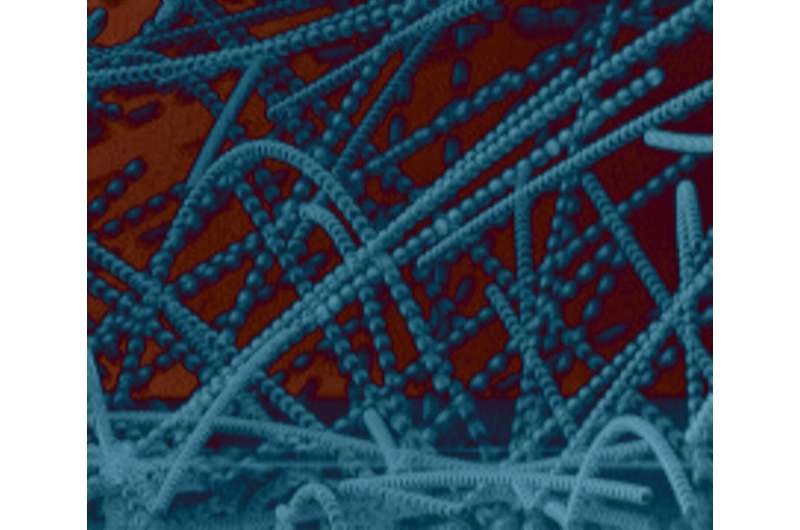How planets may form after dust sticks together

Scientists may have figured out how dust particles can stick together to form planets, according to a Rutgers co-authored study that may also help to improve industrial processes.
In homes, adhesion on contact can cause fine particles to form dust bunnies. Similarly in outer space, adhesion causes dust particles to stick together. Large particles, however, can combine due to gravity—an essential process in forming asteroids and planets. But between these two extremes, how aggregates grow has largely been a mystery until now.
The study, published in the journal Nature Physics, found that particles under microgravity—similar to conditions believed to be in interplanetary space—develop strong electrical charges spontaneously and stick together, forming large aggregates. Remarkably, although like charges repel, like-charged aggregates form nevertheless, apparently because the charges are so strong that they polarize one another and therefore act like magnets.
Related processes seem to be at work on Earth, where fluidized bed reactors produce everything from plastics to pharmaceuticals. During this process, blowing gas pushes fine particles upwards and when particles aggregate due to static electricity, they can stick to reactor vessel walls, leading to shutdowns and poor product quality.
"We may have overcome a fundamental obstacle in understanding how planets form," said co-author Troy Shinbrot, a professor in the Department of Biomedical Engineering in the School of Engineering at Rutgers University-New Brunswick. "Mechanisms for generating aggregates in industrial processes have also been identified and that—we hope—may be controlled in future work. Both outcomes hinge on a new understanding that electrical polarization is central to aggregation."
The study, led by researchers at the University of Duisburg-Essen in Germany, opens avenues to potentially controlling fine particle aggregation in industrial processing. It appears that introducing additives that conduct electricity may be more successful for industrial processes than traditional electrostatic control approaches, according to Shinbrot.
The researchers want to investigate effects of material properties on sticking and aggregation, and potentially develop new approaches to generating and storing electricity.
More information: Steinpilz, T., Joeris, K., Jungmann, F. et al. Electrical charging overcomes the bouncing barrier in planet formation. Nat. Phys. (2019) DOI: 10.1038/s41567-019-0728-9 , nature.com/articles/s41567-019-0728-9
Journal information: Nature Physics
Provided by Rutgers University




















